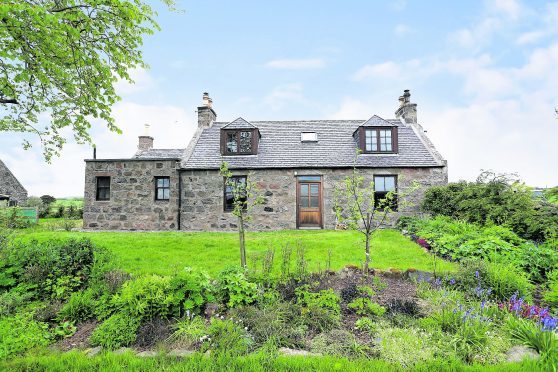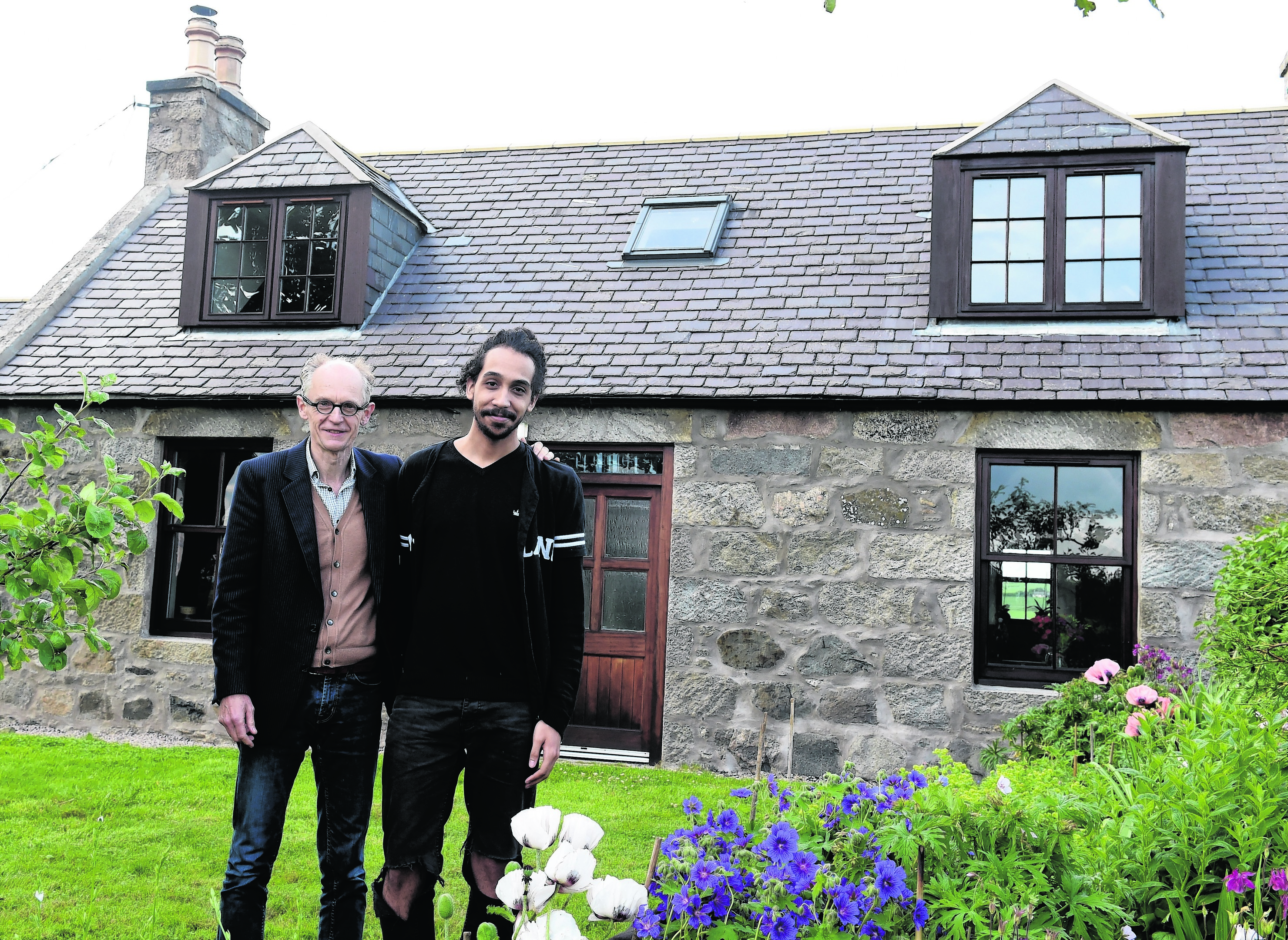Charming and full of character, Claypots, near Fintray, is a house where around every corner there is another quirk and piece of history.
You can even see the northern lights, the aurora borealis, from this countryside home.
David Salt, 52, and his wife Karen, 43, have lived at Claypots for nearly five years. They met when David went to work at the University of Kentucky, Lexington, in the US. They moved to Guelph in Canada with their twins Liam and Seamus before travelling to New Jersey, where Moira was born. Their life of adventure led them to Arizona and then 10 years on a farm in Indiana.
David said: “We have always lived in the country since we moved to Arizona, so the setting of the house was a major attraction.
“It is surrounded by countryside on all sides.
The cottage is very rural, with their nearest neighbours, of the five cottages around Claypots, about 500 metres away in either direction. The garden is a large size with a lawn, a vegetable plot and five apple trees. All of this and the outbuildings are being sold for prices over £290,000.
David and Karen have done major refurbishments to the house, including a new slate roof, re-pointing the external walls and putting in new cast iron gutters and downpipes. About £80k has gone into the house and the outbuildings. They took the ruined bothy, which was just three partial walls, and have converted it into a studio.
“One of the things we love about the house is the large stone barn, or steading, which shares the property with the house and studio,” said David.
“Over the years, we have worked on it and now it is a water and wind-tight structure which makes an excellent very large space to complete any sort of project.”
The entrance hall in the main house has tiled flooring while the lounge has wooden flooring. Original features include the fireplaces in the living room and the kitchen. Plasterboard covered the kitchen fireplace and the bedrooms have ones waiting to be uncovered.
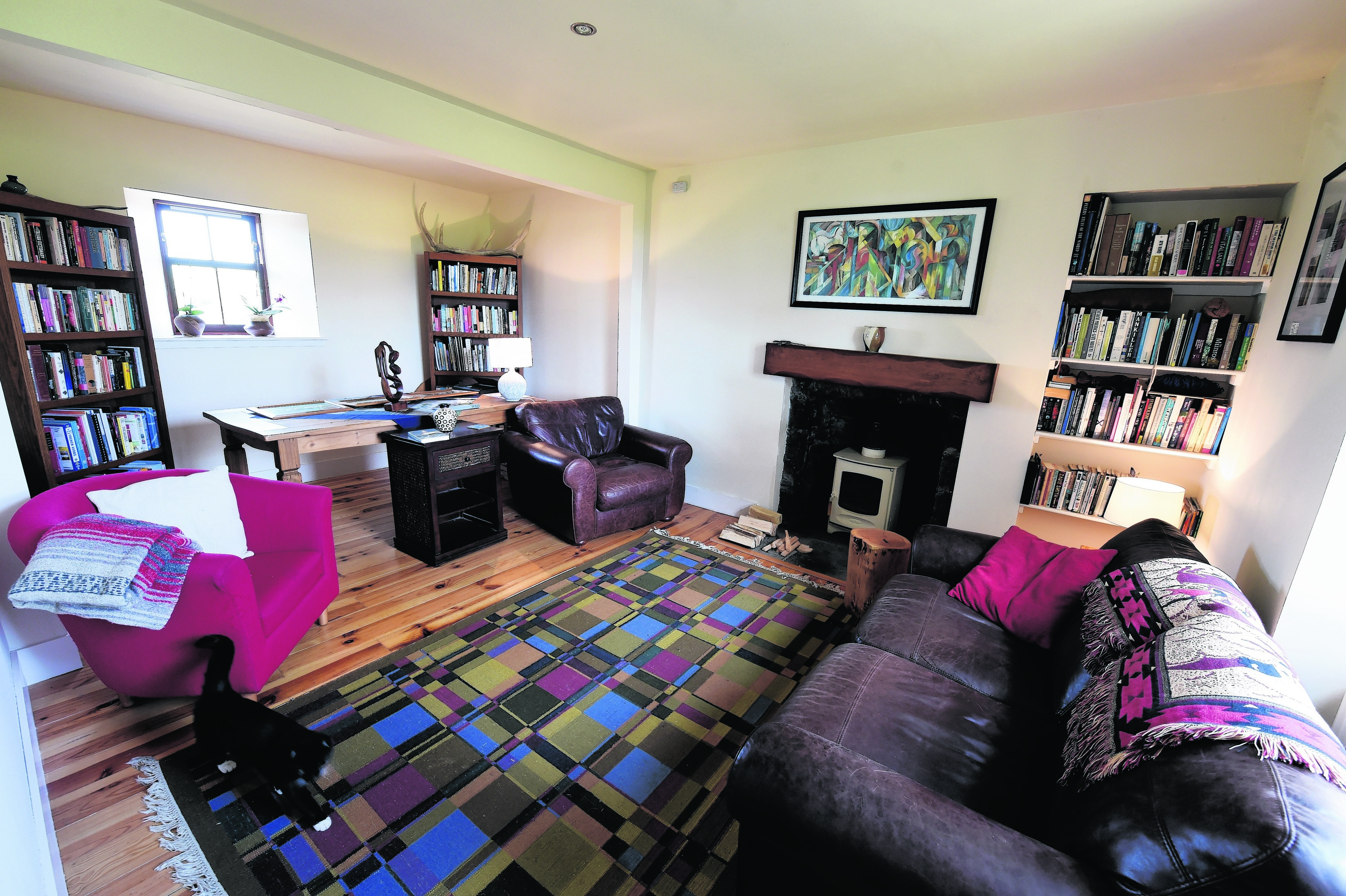
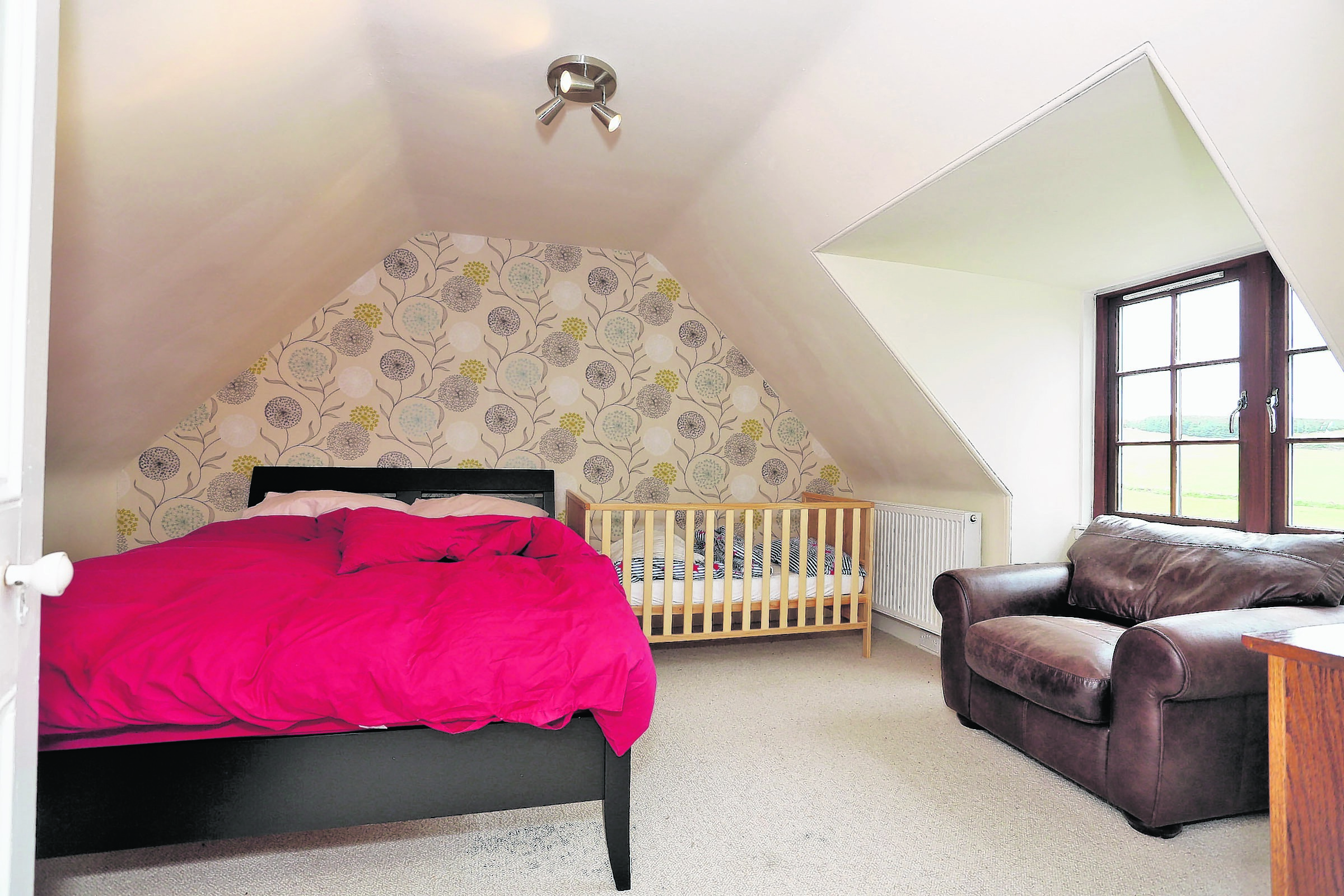
The kitchen spans the full width of the house with windows facing both directions. The heart of the family home, it is heated by a wood burning stove which sits in the large stone fireplace with the granite mantel and slate hearth.
The room is open plan with the dining room and has a granite wall, double Belfast sink and a separate utility room.
A wet room, three bedrooms and a family bathroom with a modern white suite and a Velux window complete the living accommodation at Claypots.
Liam, 23, is an artist and currently lives with his parents at Claypots. The house is only 30 minutes from the University of Aberdeen, where David is a professor of plant science. Karen also works there and is a professor studying race and rights, so the commute works well for them both.
“We commute to Old Aberdeen every weekday,” said David.
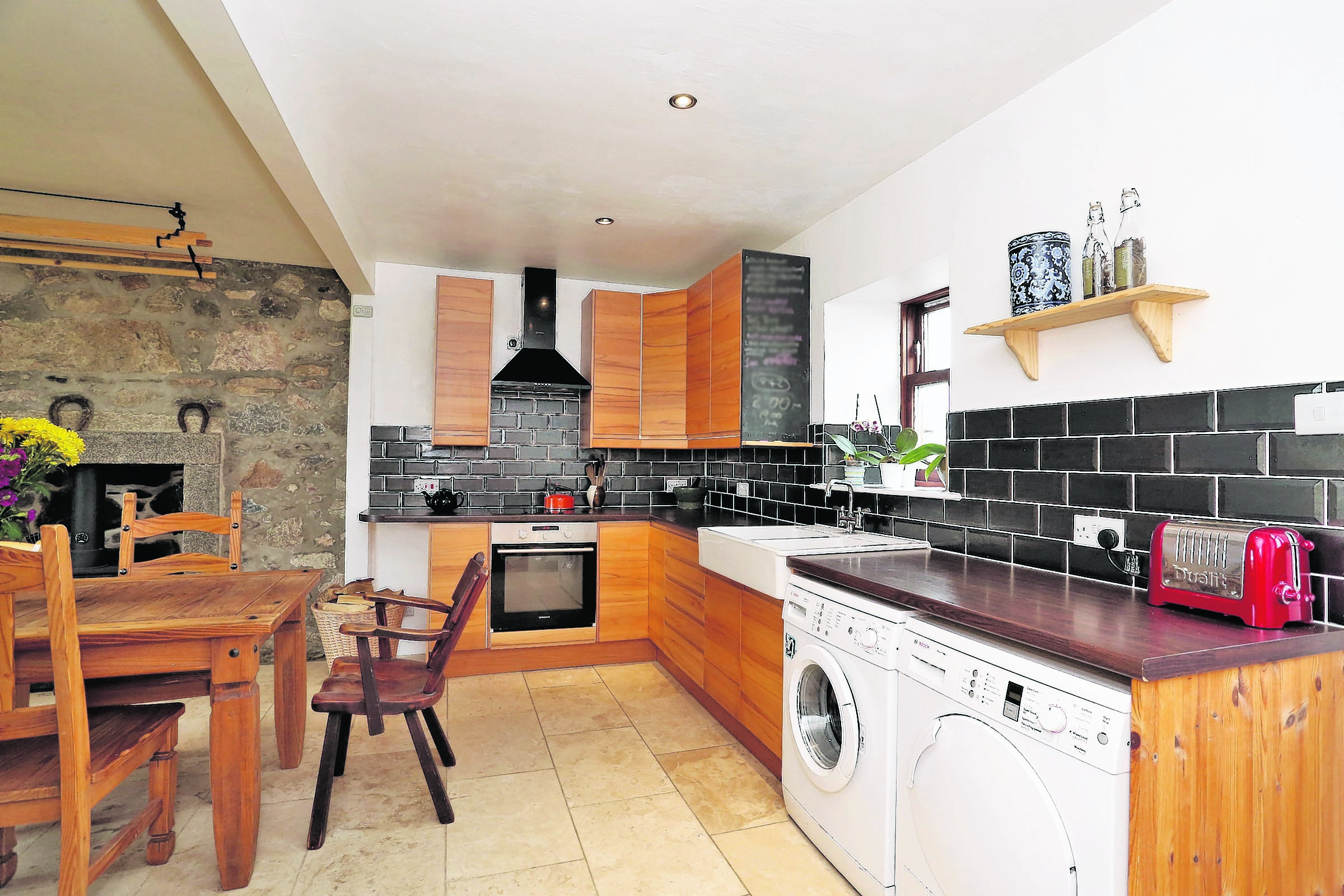
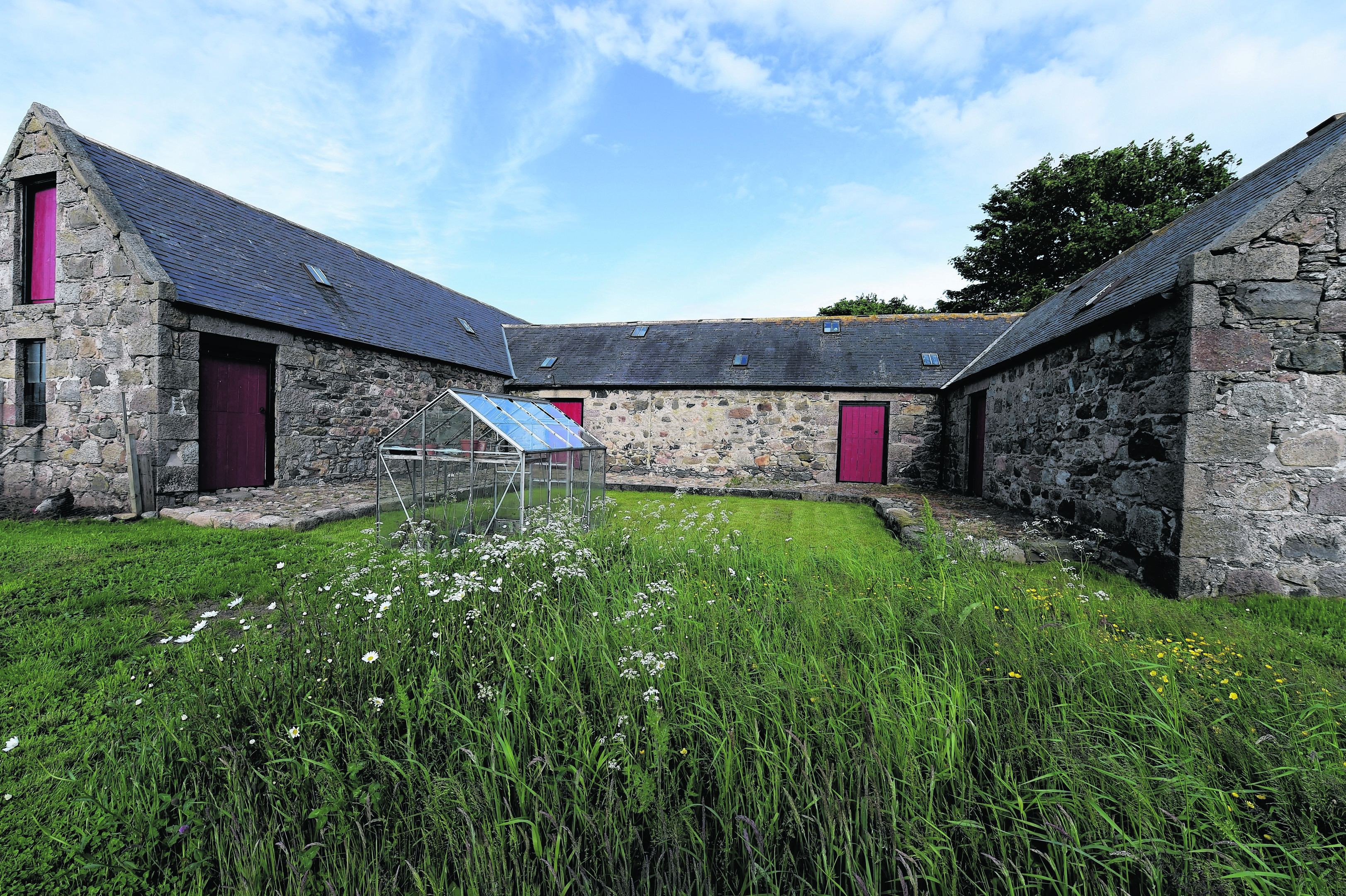
“The new bridge over the Don is now making this journey even easier as we can avoid traffic at the Bridge of Don and King Street.”
They are moving to the University of Nottingham because it has strengths in the research areas David and Karen have spent their careers contributing towards.
“Though leaving Claypots will be very hard – as we have grown to love our home – the University of Nottingham offers both of us important new opportunities in our careers, and for us our careers are critical,” said David.
Contact Simpson and Marwick on 01224 622622.
THE HISTORY
David and Karen describe the history of Claypots
Claypots is on the OS map of 1840 and we have a date carved into the steading wall of 1864, so we know for sure that the Claypots farm in its present form has been here at least 150 years and on the map as Claypots for almost 180 years. We also have aerial photographs starting in 1971 showing Claypots as a working farm, even showing the farmer with his tractor. You can clearly see that the plot where David now has his vegetable garden used to be where the farmer kept his chickens and ducks.
Talking to some of the farmers around Claypots, we have learned more about its history. Jimmy, a local farmer, would drop by in the autumn to sell us potatoes, leeks, onions and carrots that he had grown. Jimmy was a story teller. Once, he told us about how the track that now ends at Claypots used to continue up and over the hill and head towards Aberdeen. It was once a drover’s road used for driving cattle to market.
We also found out that the Claypots steading used to have a water mill to grind barley and oats. The area where the mill pond used to be is still much damper than the rest of the field and the mill race still brings water to the back of the steading. Inside the steading, the floor mounts for the motorised mill can also be seen with a date drawn into the concrete of 1956.
History pops up in the strangest places. On a taxi ride back from Dyce airport a couple of weeks ago, the taxi driver told David that when he was a small boy, he used to come out to Claypots to visit a relative – he even remembered falling into the burn behind the house. His family even received a chicken wrapped in paper sent from Claypots each Christmas. The taxi driver hadn’t seen the cottage in 50 years.
With all the work we do in the garden and around the property, we dig up all sorts of interesting things, including huge old horse shoes, which immediately sends you back to a preindustrial time when Claypots was still farmed using big horses. Seeing the original cobble floor of the barn reinforces this strong sense of history and connection from past to present.
David has always been very sentimental, and often, as he quietly smokes his bacon in the steading, or moves the enormous boulders from the corners of the property, he can almost feel that old farmer and his cattle from so many years ago.
